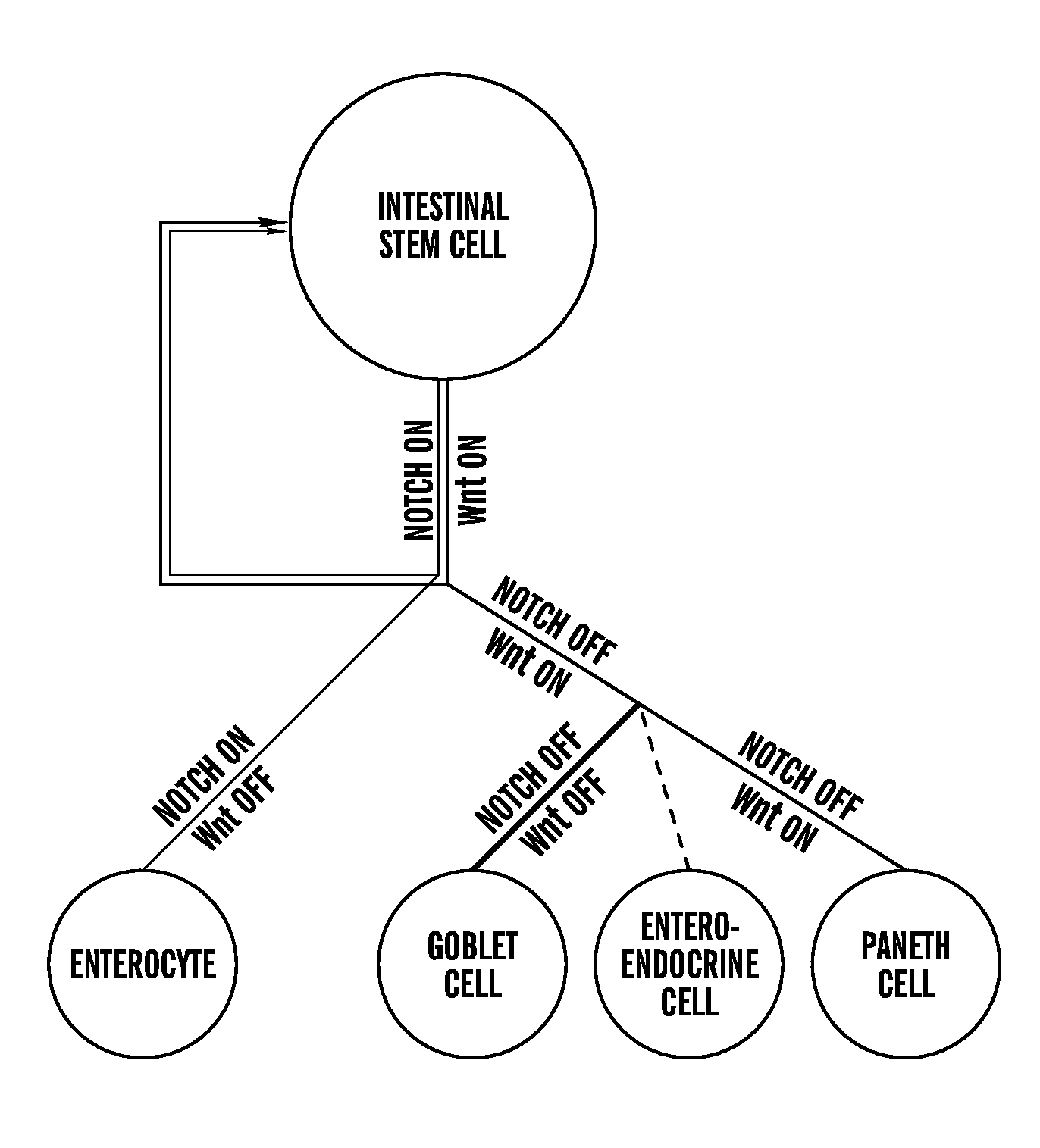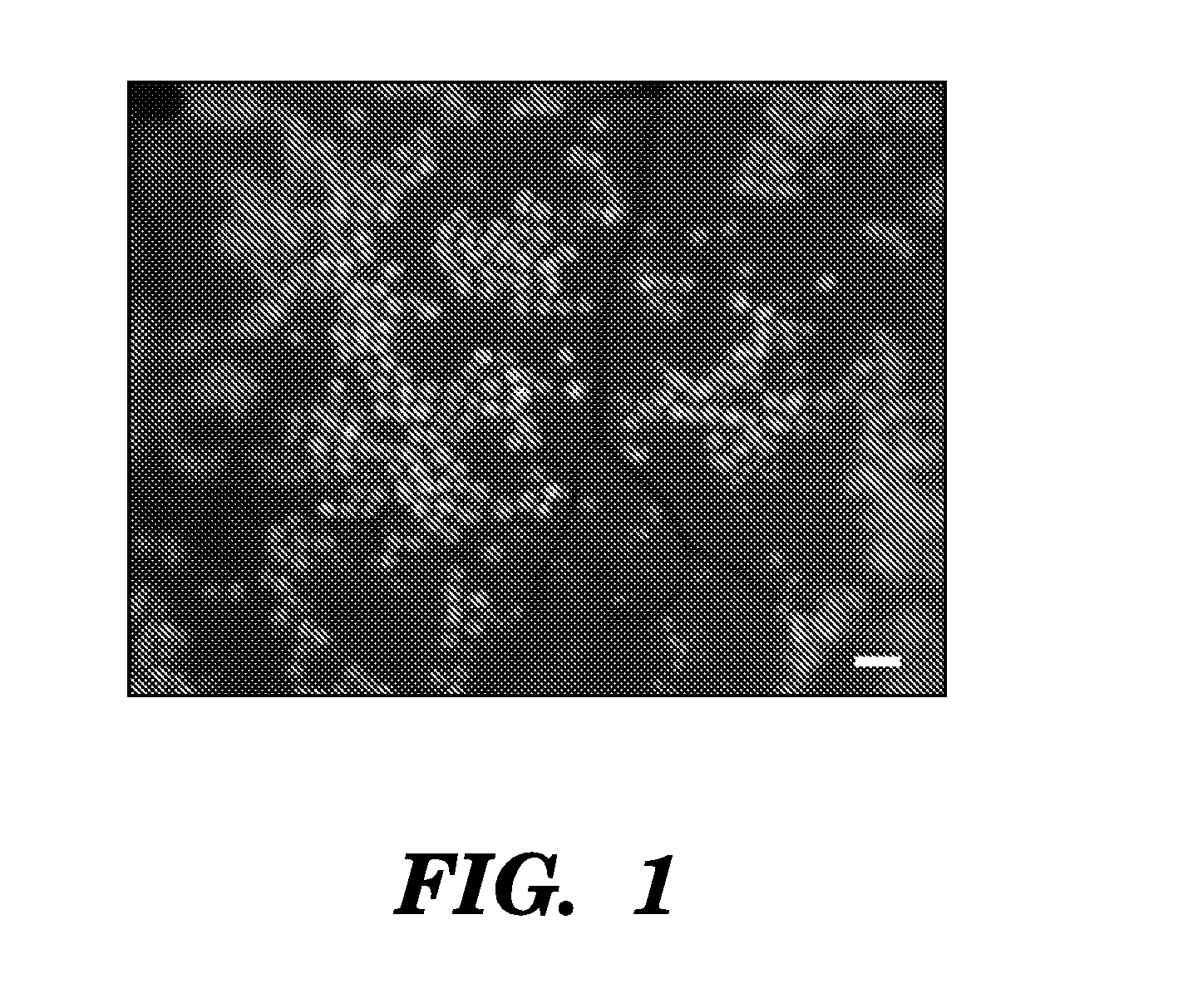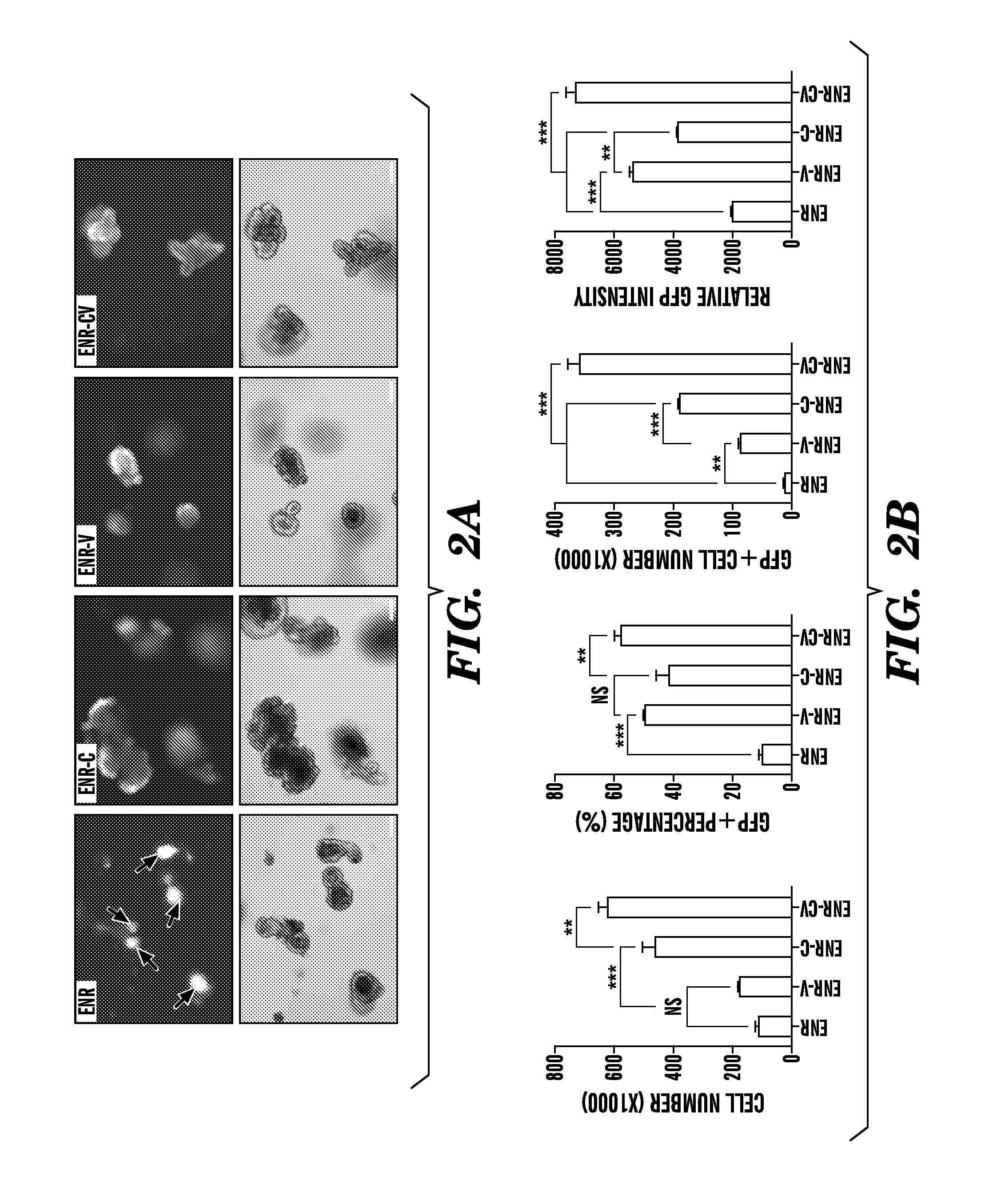Compositions And Methods For Epithelial Stem Cell Expansion And Culture
a technology of epithelial stem cells and compositions, applied in the field of compositions and methods for epithelial stem cell expansion and culture, can solve the problems of limiting the ability to control the fate of lgr5sup, stem cells in culture, and little to no control of self-renewal and differentiation
- Summary
- Abstract
- Description
- Claims
- Application Information
AI Technical Summary
Benefits of technology
Problems solved by technology
Method used
Image
Examples
example 1
Self-Renewal of Lgr5+ Intestinal Stem Cells is Maintained Using a Combination of Small Molecules
[0229]The self-renewal and differentiation of ISC is controlled by the coordinated regulation of several signaling pathways (Crosnier, Stamataki, & Lewis, 2006; Scoville, Sato, He, & Li, 2008; van der Flier & Clevers, 2009). In this study small molecules were identified that target relevant signaling pathways to maintain the self-renewal status of Lgr5+ stem cells and to control their differentiation independently of cues provided by other cell types.
[0230]Crypts and single Lgr5-GFP cells were isolated as previously described (Sato et al., 2009). Briefly, the proximal half of the small intestine was harvested, opened longitudinally, and washed with cold PBS to remove luminal content. The tissue was then cut into 2-4 mm pieces with scissors and further washed 5-10 times with cold PBS by pipetting up and down using a 10-ml pipette. Tissue fragments were incubated with 2 mM EDTA in PBS for 3...
example 2
Lgr5+ Stem Cells Remain Multipotent Following Culture in CHIR and VPA
[0240]Intestinal stem cells have the ability to self-renew as well as differentiate into all cell types in the intestine epithelium, including the four major cell types: enterocytes, goblet cells, enteroendocrine cells and Paneth cells. To test the differentiation capability of Lgr5+ stem cells cultured in the CV condition, the cell colonies were transferred to the ENR condition that permits Lgr5+ stem cells to spontaneously differentiate into the mature cell types of the intestine. As expected, after withdrawal of CHIR and VPA, the morphology of organoids changed to the typical morphology of organoids cultured in ENR condition, with crypt-villus structure and Lgr5+ stem cells at crypt tips (FIGS. 7A and 8A). The mRNA expression of differentiation markers Alpi, Muc2, and ChgA elevated and cells expressed a similar level of Lysozyme (comparing ENR and CV in FIG. 7B). Immunocytochemistry staining for these markers co...
example 3
Differentiation of Intestinal Stem Cells is Controlled
[0241]Next, with the ability to expand high purity Lgr5+ stem cells in vitro, directing the differentiation of Lgr5+ stem cells towards mature cell types was attempted. As Wnt and Notch are two of the main signaling pathways that control the differentiation of ISC, the Wnt pathway inhibitor IWP-2 (also I) and Notch inhibitor DAPT (also D) were used to induce the differentiation of cultured Lgr5+ stem cells. Because cells in the ENR condition spontaneously differentiate into organoids containing all epithelial cell types, ENR was included in the differentiation cultures. Following culture of single stem cells in the CV condition for 6 days, cell colonies were harvested and transferred into several wells and cultured in the presence of single or multiple inhibitors (FIG. 8B). As shown in FIG. 7B, replacing CV with IWP-2 or DAPT decreased ISC marker Lgr5 expression and induced expression of differentiation markers Alpi, Muc2, ChgA a...
PUM
 Login to View More
Login to View More Abstract
Description
Claims
Application Information
 Login to View More
Login to View More - R&D
- Intellectual Property
- Life Sciences
- Materials
- Tech Scout
- Unparalleled Data Quality
- Higher Quality Content
- 60% Fewer Hallucinations
Browse by: Latest US Patents, China's latest patents, Technical Efficacy Thesaurus, Application Domain, Technology Topic, Popular Technical Reports.
© 2025 PatSnap. All rights reserved.Legal|Privacy policy|Modern Slavery Act Transparency Statement|Sitemap|About US| Contact US: help@patsnap.com



